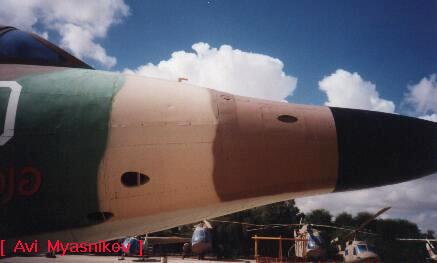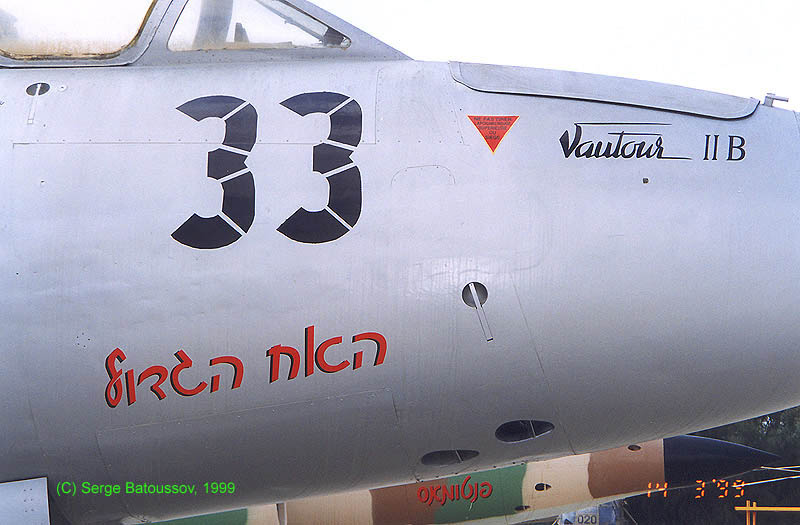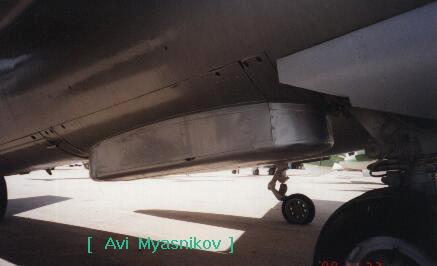1. The few N aircraft were continueously improved even before
their conversion to the attack role. The most significant was enhancing the radar capabilities. Another change was made
by omitting the guns' barrels deflectors.
2. Conversion to the day-attack & leading role was performed,
apparently, during the 1963 through 1964. For a short time the N aircraft still maintained all-weather alert (at sqn. 110, one
Vautour ?), to fill the gap till the two adapted Mirages would
undertake this task.
3. After the loss of BR-35, October 1964, the Vautour N 66 (that had
been severly damaged in accident), was refurbished and fitted with
the panoramic KA-52 camera in the nose, (instead of the radar). After
tests the system became operational in 1966.
4. The Vautour N 70 was overhauled in Israel and converted to the
ECM role, carrying two "Yabelet" pods underwings. A second N (no. 66?)
was also converted to this role.
5. After the loss of the 3rd BR (no. 31, December 1967), the N 70
went through several changes to carry all the day caneras, three
K-38 in the weapons bay, and a K-52 or Chase RMK, in the nose,
instead of the gun pack. (It is possible that the "70" carried
additional fuel tanks, and it's also possible that, for air defence,
it was equipped with two Shafrir-1 (??). This aircraft was very successful and served in both ECM and PR roles till end of 1971.
See also [ Gallery 2 - Vautour 70 ] page.

One of the side-oblique camera openings, at the nose of the
preseved Vautour 70 "Phantomas".
[ The Vautour N paragraph will be completed ]
The table below is a summary of the conversions the Vautours
underwent to the Photo-Reconnaissance role:





